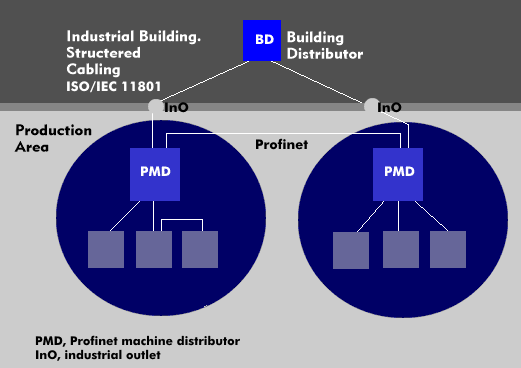Profinet
Profinet is the network-technical conversion of the Profibus to a universal communication system. Profinet is a universal concept developed by the Profibus User Organization (PNO) for the homogeneous integration of the Profibus for process automation and in Industrial Ethernet.
Consistent automation solutions can be implemented on a Profinet. At the same time, the open Profinet supports the integration of other fieldbus concepts, since it relies on proven standards. Likewise, field devices distributed on Profinet and time-critical applications, Component Based Automation (CBA), which provides for the integration of vertically and horizontally located sensors, field devices, control equipment, plant modules and programmable computers, can be incorporated.
The Profibus User Organization defines Profinet as a multi-vendor communication, automation, and engineering model that uses TCP/ IP protocols for communication, uses Common Object Model( COM) and Distributed Component Object Model ( DCOM) in the automation model, and supports object handling in the development domain through ActiveX and Extensible Markup Language(XML).
Technical concept of Profinet
Profinet is a concept for Industrial Ethernet that can work with Single-Pair Ethernet( SPE) and the extended physical layer, the Advanced Physical Layer( APL). In its original form, it uses tunneling and Ethernet switching, where Ethernet supports the upper communication layers and does not interfere with the application. Cabling can be based on the ISO/IEC11801 cabling standard, which has been extended in the ISO/ IEC 24702 standard to address the specific concerns of production environments, as well as the IEC 63171 standard for SPE cabling.
Profinet defines two real-time classes with Real Time( RT) and Isochronous Real Time (IRT). In the RT class, delays are tolerated by the application within certain limits without affecting the process. Isochronous Real-Time supports clock- synchronous applications and has high timing requirements. Such applications cannot be realized with the stochastically working Ethernet, but require a deterministic access method.
The connectors specified for the data are the RJ45 connector and the M12 connector for electrical transmission via copper cable and the SC-RJ connector for optical transmission via fiber optic cable.

